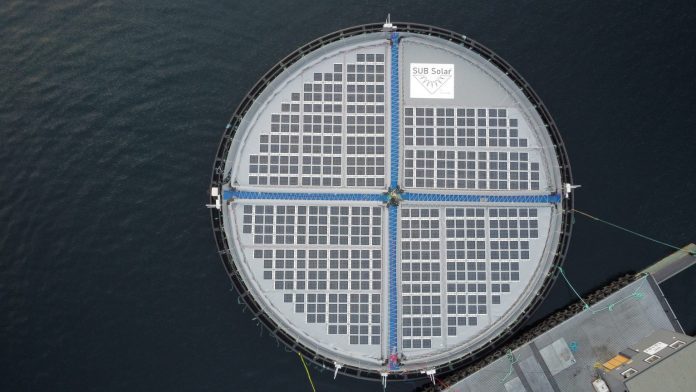Inseanergy tests new energy source to supply to fish farms.
Alternative energy company Inseanergy is developing a system for floating solar panels that allows electricity to be obtained for emission-free operations of fish farms. The long-term goal is to create a self-sufficient renewable energy system for the aquaculture industry.
At the Hofseth Aqua fish farm in Western Norway, solar modules have already been installed on a cage that is not in use. The solar farm will be tested through the winter.
Circular mindset
In Norway alone, over 1,000 x 120m perimetres of salmon cages will be replaced in the next few years. Today, the disposal of cages is an expense for salmon farmers. Now Inseanergy is facilitating the reuse of cages to create renewable electricity using solar cells.

“Our goal is that excess cages become an environmental value and a profitable green source for the aquaculture industry,” Inseanergy CEO Jan Erik Våge Klepp said in a press release.
Tested at Hofseth Aqua
The winter season will be used to find out how the weather affects the solar set up at the site.
Roger Hofseth, CEO of Hofseth International, said they want to help find new and more environmentally friendly solutions, in parallel with their ambition to contribute to local value creation.
“Our location at Stranda is connected to shore power, and we can therefore safely provide our facility for testing. The solution, with the use of solar panels on cages, can have great potential, especially for locations that are not connected to shore power. Our goal is to find real environmentally friendly and profitable solutions,” said Hofseth.

International market
Inseanergy believes it is natural to start in Norway where technology development has come the longest, and knowledge has been created but sees great potential internationally.
Excluding the environmental advantages, the system will also be of great help in areas and regions where there is barely a supply of electricity and other important input factors.
“With this future solution, the aquaculture industry has taken another step in the green classification, both in terms of restructuring to the circular economy and limiting greenhouse gas emissions. It’s about taking a green lead,” concluded Våge Klepp.
The project has received environmental technology support from the state-owned company and national development bank Innovation Norway.


